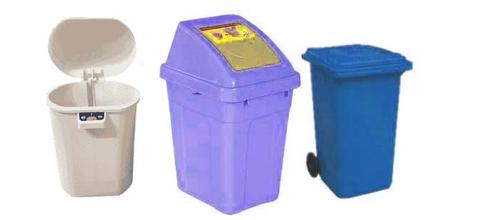In the 1960s, the Chinese began to do R&D about rotomolding technique. At that time, toy factories in Shanghai had employed rotomolding technique to produce PVC soft pellets; some factories have successfully produced the rotomolding polyethylene containers with the volumes of 200L and 1500L. In the middle of 1970s, a factory in Beijing has successfully manufactured the rotational nylon containers and applied in fire fighting products. By 1992, there were dozens of rotomolding plants in China, but their equipment and technique are just equal to the level of Westerners in 1950s and 1960s. The annual processing resin was approximately 9,000 tons per year, took 0008 % in the domestic annual consumption, and 1% in the world. There were 28 kinds of
rotomolding products, which took up 0.5% in the world. Some plastic companies also participated in rotomolding manufacturing, but have technological limitations and were difficult to make breakthrough. Some of them even produced shoddy products. Most rotomolding workers didn’t have the knowledge of advanced technology and didn’t know how to compete in the market. American largest rotomolding manufacturer once mentioned that: “China hasn’t started the rotomolding industry yet, there is a potential market to explore.”
In the middle and late 1990s, some domestic manufacturers brought the advanced equipment and technology from foreign countries and after then began a large-scale industrial production. Currently, domestic rotomolding companies can manufacture the chemical containers with 20000L volume and high-speed yachts and other large rotomolding products. In recent years, with the rapid development of rotomolding industry in China, there are over 100 rotomolding factories over all the nation, the products produced by these factories are become more diversified and applied in more fields. However, compare to technologies of developed countries, we still have a long way to go. In the 1990s, there were already more than 5000 kinds of products registered in the USA, but we have only 40 kinds up to now, the products were involved in more than 30 fields in foreign countries, but we just 10 or so. In terms of material, the current domestic market, the polyethylene and related materials takes up 75%, more than 99% products use PE as raw material, among them, 95% use LLDPE, while the proportion of polyethylene in foreign countries is: 65% LLDPE, 10% HDPE, 5% LDPE and 2% XHDPE.
In order to adopt the increasing number of rotomolding products kinds, the technique is also improving, the demand of rotomolding products is growing in different fields, and China Plastics Processing Industry Association has also established a professional committee for rotomolding. The purpose of the committee is to exchange experience, acquire the advanced technology and knowledge form foreign countries, strengthen the cooperation between each other and promote the development of rotational molding industry in China.
